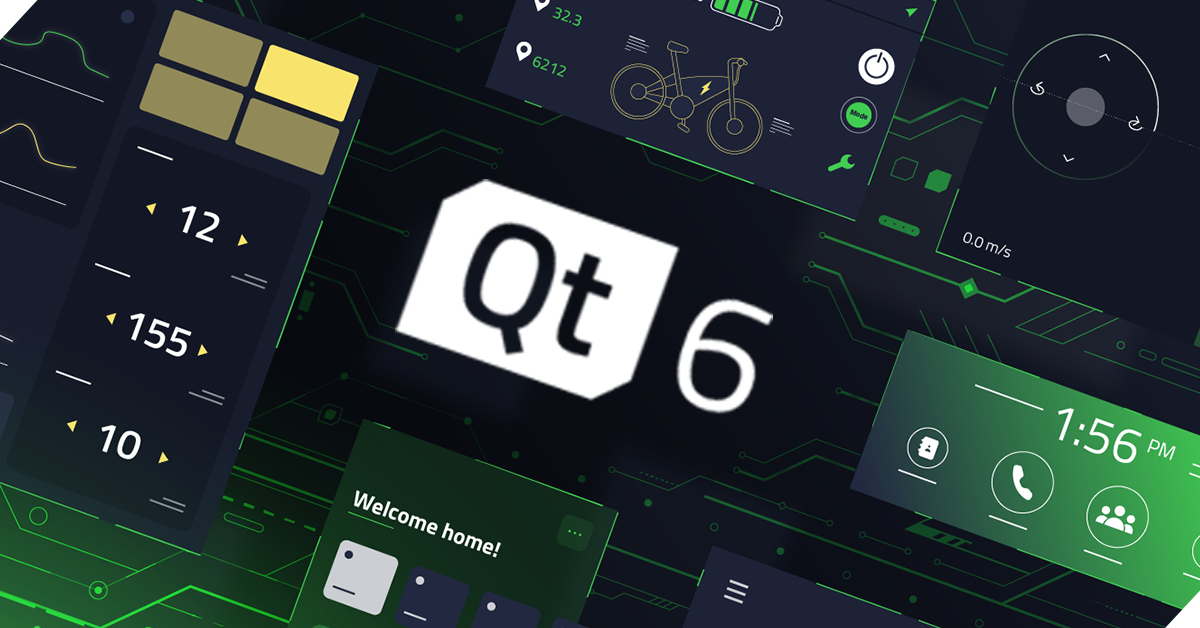
The Qt Company unveiled a few days ago the launch of the new version of the «framework Qt 6.2», in which work continues to stabilize and increase the functionality of the Qt 6 branch.
This new version of Qt 6.2 provides support for Windows 10, macOS 10.14+ and different Linux platforms Among which stands out Ubuntu 20.04+, CentOS 8.1 +, openSUSE 15.1+, as well as support for mobile platforms iOS 13+, Android (API 23+) and others such as webOS, INTEGRITY and QNX.
Main new features of Qt 6.2
It is observed that lThe Qt 6.2 branch has reached parity with Qt 5.15 in terms of module composition and it is suitable for Qt 5 migration by most users. The key improvements in Qt 6.2 mainly relate to the inclusion of modules that were available in Qt 5.15, but were not ready for inclusion in Qt 6.0 and 6.1 versions. In particular, the missing modules are included:
- qt-bluetooth
- Qt Media
- NFC
- Qt Positioning
- Qt Quick Dialogs
- Qt RemoteObjects
- Qt Sensors
- Qt SerialBus
- QtSerialPort
- Qt WebChannel
- Qt WebEngine
- Qt WebSockets
- Qt WebView
With the release of Qt 6.2, almost all of our users should be able to migrate their code from Qt 5 to Qt 6. We have done this with our own tools. Namely, Qt Design Studio 2.2 and Qt Creator 6 beta, which will be released soon, are based on Qt 6.2 LTS.
In addition to adding missing features, Qt 6.2 focused on improving stability, performance, and quality of life for developers.
Of the changes that stand out in this new version of QT 6.2, one of them is the nnew optimized rendering mode «Rendering in instances»To Qt Quick 3D, which allows rendering multiple instances of the same object with different transformations at the same time, plus the 3D Particles API was also added to add effects to 3D scenes generated by large accumulations of particles (smoke, fog, etc.).
Also in this new version provided the ability to create Qt Quick Input events for 2D elements embedded in 3D scenes and textures. An API has been added to determine the intersection of models with a ray emanating from an arbitrary point in the scene.
It is also highlighted that A public QML module CMake API has been proposed to simplify the user the process of creating QML modulesIn addition to the options to configure the behavior of the qmllint utility (QML linter), support has been added to generate validation reports in JSON format. The qmlformat utility uses the QML dom library.
On the other hand, it is also highlighted that the architecture of the Qt Multimedia module has been modernized, in which features such as the choice of subtitles and language for video playback, as well as advanced settings for capturing multimedia content have appeared. added new methods to Qt Charts to customize charts.
Of the other changes that stand out from this new version of QT 6.2:
- QImage added support for image formats that specify floating point color parameters.
- QByteArray :: number () provides the correct handling of negative numbers in non-decimal systems.
- Added std :: chrono support to QLockFile.
- Qt Network offers the possibility to use different SSL backends at the same time.
- Added support for Apple systems based on the ARM M1 chip. Returned support for webOS, INTEGRITY, and QNX operating systems. Preliminary support for Windows 11 and WebAssembly has been proposed.
If you are interested in knowing more about it about this new version of QT, you can check the details In the following link.
Finally, you should know that the sources of the Qt components are published under the LGPLv3 and GPLv2 licenses. Qt 6.2 received the status of an LTS version, within which updates will be generated for users of a commercial license within three years (for the rest, updates will be released six months before the next significant version is formed).